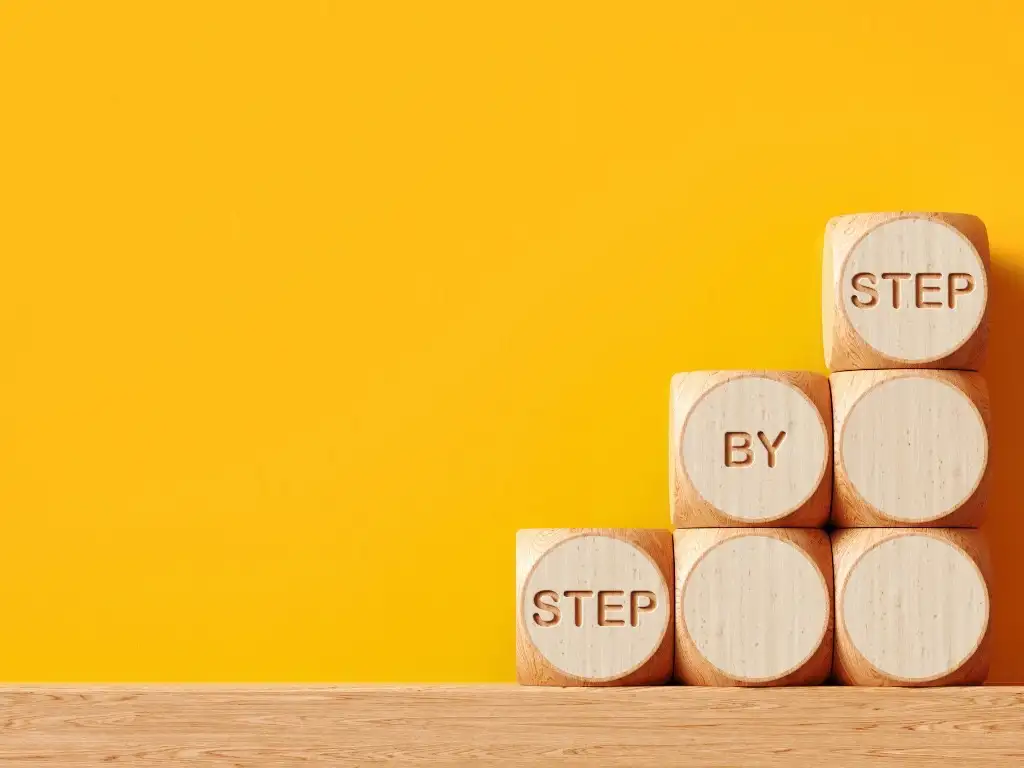What if fear isn’t a stop sign, but a signal that you’re standing at the edge of growth?
You know the feeling. A chance appears, yet your chest tightens. You fear losing stability, status, or a hard-won path. In moments like these, Personal Growth can feel risky. Still, this is how to grow personally: you face the unknown, you assess what you can control, and you move one small step at a time.
Think of a physician shifting into wellness coaching. The fear is not just about money. It is about identity, reputation, and security. That is why personal development starts with a clear frame. You reappraise the stress as energy. You use breathing, meditation, and journaling to steady your mind. You break the change into tiny actions and celebrate small wins. You practice the “Fear Flip,” turning threat into fuel.
Modern life hides fear in plain sight. You may avoid speaking up in a meeting or pass on a new role. Avoidance drains momentum across your life. The importance of personal growth is simple: you cannot remove fear, but you can act with it. You honor your values, claim your strengths, and keep going with purpose.
This article gives you practical tools rooted in brain science and lived experience. You will learn how to grow personally by reframing change as opportunity, focusing on what you can control, and building daily habits that calm your nervous system. Step by step, you will move forward—afraid, yes, and braver than before.
Key Takeaways
- Fear can signal the edge of Personal Growth, not a hard stop.
- Reframe change as learning to reduce threat and unlock action.
- Focus on what you can control and break goals into tiny steps.
- Use breathwork, meditation, and journaling to steady your mind.
- Visualize your future self to build clarity and momentum.
- Celebrate micro-wins to wire confidence and consistency.
- You can be afraid and still move forward with purpose-driven personal development.

Understanding Fear: Why Your Brain Resists Change
You want to grow, but your brain prefers safety. This battle affects your Personal Growth and development. When things seem uncertain, your body gets ready to defend itself.
Recognizing this pattern is key to growing without ignoring your growth needs.
The amygdala, prefrontal cortex, and the fight-or-flight response
Your amygdala looks for threats and acts quickly. It makes your heart race and your focus sharp. The prefrontal cortex, which makes decisions, can get overwhelmed by stress.
When you seek Personal Growth, this reaction can stop you. But, by staying calm and focused, you can help your brain make better choices.
How stored memories in the hippocampus reinforce avoidance
Your hippocampus remembers scary moments. When something looks similar, it tells you to avoid it. This can slow down your Personal Growth journey.
But, by facing small challenges, you can update your brain’s memories. Over time, it learns that new paths are safe, supporting your Personal Growth.
Evolutionary roots of fear of rejection and judgment
For early humans, being rejected meant real danger. Historian Yuval Noah Harari explains in Sapiens that belonging was crucial for survival. Today, social threats still trigger fear.
Understanding this can help you see judgment as a signal, not a threat. You can follow your values and keep growing, even when it’s hard to get approval.
The Importance of Personal Growth in Facing the Unknown
Every time you try something new, you face the unknown. Personal growth is key in these moments. It helps you turn nervousness into action and makes personal growth smoother.
Small steps can help you overcome fear. Today, you can start with a five-minute plan, reach out to someone, or review something. These actions build momentum you can feel.
Why growth stalls when you avoid discomfort
Avoiding hard tasks might seem safe, but it stops progress. When you shy away from challenges, your skills and options fade. You wait for certainty, but it never comes.
See change as a chance to practice. Start with small, regular efforts that push you a bit. This keeps your focus sharp and helps you grow without feeling overwhelmed.
The dampening effect versus building momentum
Staying still too long can make each step harder. Confidence starts to fade. But, small wins can create a snowball effect. One call leads to a meeting, and so on.
Use habits that reward consistency. Track your daily streaks, celebrate small wins, and review your progress weekly. These habits turn personal growth into a powerful cycle.
Linking personal development to confidence and resilience
Acting while afraid builds confidence. You learn to accept fear and still move forward. Align your actions with your purpose, like serving others or improving your health, and your determination grows.
Practical supports can boost your efforts. Know your strengths, use positive self-talk, and surround yourself with supportive people. This approach helps you grow in your career, relationships, and mental health.
| Challenge You Face | Action You Can Take Today | Skill Strengthened | Personal Growth Outcome | Fear of change at work |
|---|---|---|---|---|
| Write a one-page plan for the next 7 days | Planning and clarity | Momentum and reduced uncertainty | ||
| Avoiding tough feedback | ||||
| Ask one colleague for a specific note on one task | Listening and adaptation | Faster learning and confidence | ||
| Stalled side project | ||||
| Commit to a 15-minute daily build sprint | Consistency and focus | Visible progress and identity shift | ||
| Social anxiety | ||||
| Send one message to reconnect with a peer | Communication and courage | Supportive network and resilience | ||
| Negative self-talk | ||||
| Replace one catastrophic thought with a balanced statement | Reframing and self-regulation | Steadier mood and personal development |

Mindset Shifts: Reframing Change as Opportunity
You can train your mind to see change as a chance to grow, not a threat. This mindset helps with Personal Growth and makes self improvement easier. Start by noticing how you think about risk, results, and control in your personal growth journey.
From loss to learning: seeing change as expansion
When change happens, your brain looks for loss. But you can see it as a chance to grow. Ask yourself where new skills, relationships, or perspectives might come from.
Try a quick audit. List three big changes you faced and write three gains from each. Note what you fear losing today, then list what you could gain. These simple prompts keep your focus on learning and sharpen your personal growth tips.
The Fear Flip: reappraising fear as excitement
Fear and excitement feel similar in your body. Your heart races. Your breath speeds up. Use the Fear Flip: say, “I’m excited,” and treat the signal as energy for action.
Pair that reframe with tiny moves. Break your next step into a five-minute task. As you stack small wins, your nervous system calms, and your personal growth journey builds momentum. This is practical self improvement you can repeat anywhere.
Beliefs that build courage: you can be afraid and still move forward
Adopt beliefs that support motion. Two things can be true: you feel fear and you act. You trust your skills and resilience to handle what comes next.
Ground these beliefs each morning. Use short affirmations, a few deep breaths, or a brief prayer to anchor courage. Name one strength you will use today. Over time, these Personal Growth habits turn values into action and reinforce reliable personal growth tips you can count on.
Personal Growth
Personal Growth starts with small, steady steps you can control. You pick one simple step and do it today. This way, you grow personally without getting overwhelmed or waiting for the perfect moment.
Start by grounding your body to clear your mind. Try deep breathing for a minute, a short meditation, or jot down your fears and next steps. These actions make personal growth feel real and achievable.
When fear hits, see it as a sign, not a stop. Neuroscience confirms your amygdala is just doing its job. Take action with small steps like drafting an email or practicing your pitch. This keeps personal development moving forward.
Imagine yourself thriving at work and home. See the details of the scene, your voice, and your calm. Rehearsing your future self links identity to action, making personal growth feel attainable today.
Your beliefs shape your actions. Replace harsh self-talk with positive, capability-focused thoughts. Surround yourself with supportive communities and lean on prayer for purpose when things get tough.
Keep a record of your progress. Log every step you take, no matter how small. Over time, these actions prove your competence, build resilience, and highlight the value of personal growth in your life.
Set Personal Growth Goals That Reduce Fear
When you turn vague worries into clear steps, you reduce fear. Set personal growth goals you can start today. Small, steady actions help tame stress and support your growth.
Clarify what you might lose vs. what you could gain
Begin with a simple audit. List what you fear losing, like stability or security. Then, list what you might gain, such as learning or new skills.
This approach helps your brain plan while calming your fears. It keeps your growth journey based on facts, not guesses.
Define outcome goals and process goals for self improvement
Outcome goals are about the result you want, like a career change. Process goals are the steps to get there, like researching or practicing a skill.
By balancing both, fear decreases and momentum increases. You stay focused on self improvement without getting sidetracked.
Align goals with your personal growth journey values
Choose goals that align with your beliefs and purpose. Use affirmations to challenge doubts and track your progress. Ask supportive people to help you stay on track.
Alignment makes your goals stick, even on tough days. It turns daily actions into a lasting path for growth.
| Goal Type | Example | Daily Action | Fear Reduction Benefit | Value Alignment Check |
|---|---|---|---|---|
| Outcome | Earn a promotion in six months | One skills practice session and one feedback request | Clarifies target and timeline, lowers uncertainty | Advances growth, responsibility, and impact |
| Process | Build expertise in data analytics | Complete one lesson on Coursera and take notes | Creates controllable steps, steady momentum | Supports curiosity and continuous learning |
| Outcome | Transition to a mission-driven company | Two informational interviews per week | Replaces guesswork with real-world signals | Matches purpose and service-oriented work |
| Process | Grow professional network | Send one thoughtful message on LinkedIn daily | Builds confidence through small wins | Reinforces connection and generosity |

Daily Habits for Personal Growth That Calm the Nervous System
You can train your body and mind to handle stress better. Simple rituals help set the tone for Personal Growth. They reduce avoidance and keep your focus on what you can control. Use these tips daily to support self improvement without feeling overwhelmed.
Meditation, breathwork, and journaling to regain control
Start with two minutes of box breathing. Inhale for four, hold for four, exhale for four, hold for four. This slows your heart rate and clears mental noise.
Then, do a short meditation using apps like Headspace or Calm. After that, journal one worry, one action you can take, and one value you will honor today. These habits help shift your state and support self improvement.
Tiny actions: one small step a day to build momentum
Choose the smallest next step you can finish in five minutes. Send one email, draft one sentence, or prepare one task for tomorrow. Momentum beats intensity.
Use daily visualization for one minute. Picture your future self acting with calm and clarity. This anchors Personal Growth in your identity and makes change feel reachable.
Celebrating micro-wins to wire confidence and consistency
Record a micro-win before bed. Say it out loud, write it, or share it with a trusted friend. Your brain learns from what you reward.
Over time, these tips recondition fear responses. Small steps stack, and your nervous system starts to expect progress.
| Habit | When | How Long | Primary Benefit | Pro Tip |
|---|---|---|---|---|
| Box Breathing | Morning or pre-stress | 2–4 minutes | Reduces arousal and mental chatter | Count with your fingers to keep pace |
| Guided Meditation | Morning | 5–10 minutes | Improves focus and emotional regulation | Use Headspace or Calm for consistency |
| Journaling (Worry/Action/Value) | Morning | 3–5 minutes | Refocuses on controllables | Write one sentence per line to stay brief |
| Smallest Next Step | Midday | 5 minutes | Builds momentum and reduces avoidance | Set a phone timer and stop when it rings |
| Future-Self Visualization | Afternoon | 1 minute | Strengthens identity and motivation | Picture the setting, posture, and one action |
| Micro-Win Review | Evening | 2 minutes | Reinforces confidence and consistency | Stack with brushing teeth to make it automatic |
| Affirmations or Prayer | Anytime | 1–3 minutes | Reframes self-talk and aligns purpose | Use present-tense, value-based statements |
Keep it light, repeatable, and real. Daily habits for personal growth work best when they are small enough to finish and meaningful enough to repeat. These routines support Personal Growth while offering practical tips for steady self improvement.
Focus on What You Can Control
When you focus on what you can control, fear quiets down. Make a list of things you can do today, like time blocks, outreach, and skill practice. Turn these into simple actions. This is Personal Growth in action, not just theory.
Stop worrying about the outcome and focus on the process. Break your work into tasks you can finish in one sitting. This gives you back control, calms your nerves, and helps with personal growth when things seem unclear.
Design your day before the day designs you. Plan your day with 90-minute sprints, LinkedIn outreach, and skill drills. If anxiety hits, take a break for meditation or journaling. This keeps your mind clear and you moving forward.
You can also pick where you spend your time. Join a supportive group, a local Meetup, or a mastermind. Choosing your environment is a practical way to grow personally, even when conditions aren’t perfect.
Link your beliefs to your actions. Challenge negative thoughts with positive affirmations and note your strengths. Add prayer or quiet time to boost your courage. Over time, these actions build calm confidence.
- Time Blocks: Set times for deep work and rest.
- Outreach: Send two messages a day to mentors or peers.
- Research: Read one quality source from Harvard Business Review or McKinsey.
- Skill Practice: Do ten focused reps on a key task; track your progress.
- Routines: Start with morning breathwork, take a walk at mid-day, and journal in the evening.
These steps help you focus on what you can influence. They build momentum, cut out distractions, and make Personal Growth a daily habit that fits into your life.
Practical Strategies to Overcome Fear and Move Forward
You can train your mind and body to act even when fear shows up. These tools turn the unknown into clear moves. They support Personal Growth, your personal growth goals, and steady self improvement.
Break big changes into manageable steps
Start with a step so small you can’t say no. If changing careers seems huge, begin by reading one industry article. Then, list three roles on LinkedIn from companies like Microsoft or Patagonia.
Tomorrow, draft a 50-word outreach note. Set daily and weekly mini-goals. Track your wins in a notebook to build momentum. Each small action compounds, fueling Personal Growth without feeling overwhelmed.
Visualize your future self to reduce uncertainty
Spend five minutes a day imagining your future self. Picture your commute, work tools, and the room’s light. Add sound, smell, and texture. Repetition makes the image feel familiar, calming your nervous system.
After each session, write one action your future self would take today. This links imagination to your personal growth goals, keeping your journey grounded.
Embrace vulnerability and seek supportive communities
Share your aims with a trusted friend or a local group. Ask for feedback and invite accountability. Openness reduces isolation and speeds Personal Growth.
Try a small stretch: take a solo day trip, introduce yourself to one new person, or join a workshop at REI. New ties build courage while aligning with your personal growth goals.
Use positive self-talk to challenge catastrophic thinking
Catch the spiral and name it. Replace “I will fail” with “I am capable, and I can learn.” List three strengths and three past wins. This reframes fear and keeps your personal growth journey moving.
Add cues that steady your mind: an I can handle this note on your phone, a short prayer or quiet meditation, and one concrete action. Small, kind words matched with steps drive self improvement.
| Strategy | First Micro-Step | Daily Cue | How It Supports Personal Growth |
|---|---|---|---|
| Tiny Task Breakdown | Read one expert article and save one job description | Calendar ping at 8:00 a.m. | Builds momentum toward personal growth goals without overwhelm |
| Future Self Visualization | Five-minute morning visualization, then write one action | Sticky note on your mirror | Reduces uncertainty and guides self improvement choices |
| Vulnerability + Community | Share one goal with a friend; join one local group | Weekly check-in text | Creates support that sustains your personal growth journey |
| Positive Self-Talk | Write three strengths and one proof of progress | Phone affirmation alert at noon | Rewires talk tracks that stall Personal Growth |
Conclusion
You can move forward even when fear shows up. Your brain’s alarm systems try to keep you safe. But, you can see these signals as chances to grow.
When you view change as learning, not loss, you start to build momentum. This is the core of Personal Growth. It’s vital for daily life.
Focus on what you can control. Start with small steps. Use tools like breathwork, journaling, and affirmations to stay motivated.
Imagine your future self with great detail. Celebrate small wins to build confidence. These actions help personal development stick and reduce stress.
Act even when you’re afraid. Turn fear into energy by changing your perspective. Seek support, meditate, or pray if it feels right to you.
Practice these habits to make progress. This approach builds resilience and keeps you moving forward, even when things are unclear.
In the end, making progress is simple but not always easy. Accept fear, choose your purpose, and take the next small step. With consistent effort, you’ll overcome avoidance, strengthen your inner voice, and trust your future. This is the lasting power of personal growth and development.
FAQ
How does my brain’s fear circuit make personal change feel so hard?
Your amygdala looks for threats and can make you feel scared before you even think. When fear is high, your brain’s planning center gets too busy. This leads to avoiding things or making quick, rash decisions.The hypothalamus makes your heart beat faster and your breathing quicker. The hippocampus stores scary memories that make you want to avoid similar dangers. Knowing how your brain works can help you deal with fear and make steady, thoughtful choices.
Why do stored memories in the hippocampus keep me stuck?
The hippocampus tags intense experiences so you avoid danger next time. While it’s good for survival, it can hold you back in personal growth. When a new challenge reminds you of a past stress, your brain sends out alarm signals fast.You can change this by taking small, safe steps. Celebrate your wins and pair actions with calm breathing or meditation. This helps create new, non-threatening memories.
What are the evolutionary roots of fearing rejection and judgment?
In the past, belonging meant survival—having food, shelter, and safety from predators. Yuval Noah Harari explains in Sapiens that being excluded could be deadly. Today, your brain still sees social risks as physical dangers.So, speaking up or changing careers can feel scary. Recognize this mismatch. You can honor the signal, then act anyway with small, supportive steps.
Why does avoiding discomfort stall personal development?
Avoidance might feel good in the short term but hurts you in the long run. It makes you lose momentum, shrinks your world, and erodes confidence. Each step after that feels even harder.By facing fear in small doses, you regain control, prove to yourself you can do it, and start a positive cycle in your life.
What is the dampening effect—and how do I reverse it?
The dampening effect is the slow drain on energy and motivation from chronic avoidance. To turn it around, focus on the process, not just the outcome. Take one tiny, doable action every day.Track your small wins. As you build evidence, your identity shifts from “I avoid” to “I act,” and momentum grows.
How does personal development build confidence and resilience?
Confidence grows when you take action despite fear. Each step you complete teaches your brain you can handle uncertainty. Over time, your stress response calms down, your planning gets better, and you bounce back from setbacks faster.This is resilience in action—proof built through consistent, manageable behaviors.
How do I reframe change from loss to learning?
List what you fear losing and what you might gain. Then think of past changes that helped you grow. This reframing trains your brain to see growth, not just risk, which lowers fear and opens up curiosity.
What is the “Fear Flip,” and does it really help?
Fear and excitement share similar physiology—racing heart, quick breath. The Fear Flip is a reappraisal: say “I’m excited” as you act. This simple label change reduces threat perception and keeps you moving.It’s not denial; it’s directing your arousal toward performance and personal growth goals.
Can I move forward even when I’m still afraid?
Yes. You can feel fear and still take a step. Courage is acting despite uncertainty. Anchor in a purpose beyond the fear, trust your ability to figure things out, and keep the next step small and manageable.
How do I set personal growth goals that reduce fear?
Separate outcomes from processes. Outcome: change roles, launch a project, or move cities. Process: research 15 minutes, send one outreach, practice a skill for 20 minutes.Align goals with your values so effort feels meaningful. This keeps your brain focused and reduces alarm signals.
What’s the best way to clarify losses versus gains before a big move?
Make two columns. In one, list feared losses (income, status, routine). In the other, list potential gains (learning, health, autonomy, impact). Then design one daily action that advances a gain without risking a major loss—like informational interviews or skill practice.You’ll reduce anxiety and build momentum.
How do I align personal growth goals with my values and purpose?
Write your top five values. For each goal, note which value it serves—service, creativity, family, or health. When fear spikes, reread the link. If you practice faith, add a brief prayer or meditation to realign with purpose.Values-aligned goals are stickier under stress.
Which daily habits for personal growth calm the nervous system?
Use five minutes of breathwork or meditation to settle your system, then journal one controllable task for the day. After you complete it, note the win. This trio—calm, clarity, completion—trains a steady cycle of regulation and action.
How small should my daily actions be?
Make them “too small to fail.” Read one page. Draft three bullet points. Send one message. Small steps lower cognitive load, reduce avoidance, and are easy to repeat. Consistency beats intensity for sustainable self improvement.
Why should I celebrate micro-wins?
Recognition releases dopamine, which boosts motivation and reinforces the behavior. It’s the chemistry of habit. Track streaks, say “done,” or share progress with a supportive friend. Micro-celebrations wire confidence and consistency.
What does “focus on what you can control” look like day to day?
You control time blocks, outreach, practice reps, rest, and your environment. You don’t control outcomes or others’ opinions. List your controllables each morning and build your plan from that list. This restores agency and reduces spirals.
How do I break big changes into manageable steps?
Chunk by phase and by skill. Example: explore, decide, prepare, execute. In “explore,” schedule two informational interviews and a 20-minute skills audit. Keep steps time-bound and specific. If a step feels heavy, halve it.
How does visualizing my future self reduce uncertainty?
Daily, picture a clear scene—where you work, how you feel, who you help. Engage senses. This primes your brain to notice pathways and lowers fear of the unknown. Pair visualization with one aligned micro-action to translate clarity into momentum.
Why is embracing vulnerability and community support so powerful?
Vulnerability turns isolation into connection. Share goals with a peer group, mentor, or mastermind. Supportive communities provide accountability, emotional safety, and shared strategies, which counter avoidance and speed up learning.
How can positive self-talk challenge catastrophic thinking?
Catch the script (“I’ll fail”). Replace it with specific, capability-focused lines: “I can learn this,” “One call is progress,” “I’ve done hard things before.” Tie each statement to evidence from your past wins to strengthen belief.
What role do strengths and faith play in courage?
Listing strengths builds self-trust. If faith is part of your life, brief prayer or meditation can anchor purpose and calm. Together, they support action while scared, which is the essence of personal growth.
How do I start my personal growth journey today?
Choose one domain—career, health, or relationships. Breathe for two minutes. Write one smallest next step you control. Do it. Celebrate. Repeat tomorrow. Consistent, tiny steps compound into confidence, capability, and resilience.







[…] long periods of sitting: Sitting for too long can make you feel sluggish. Make sure to stand up, stretch, and move […]